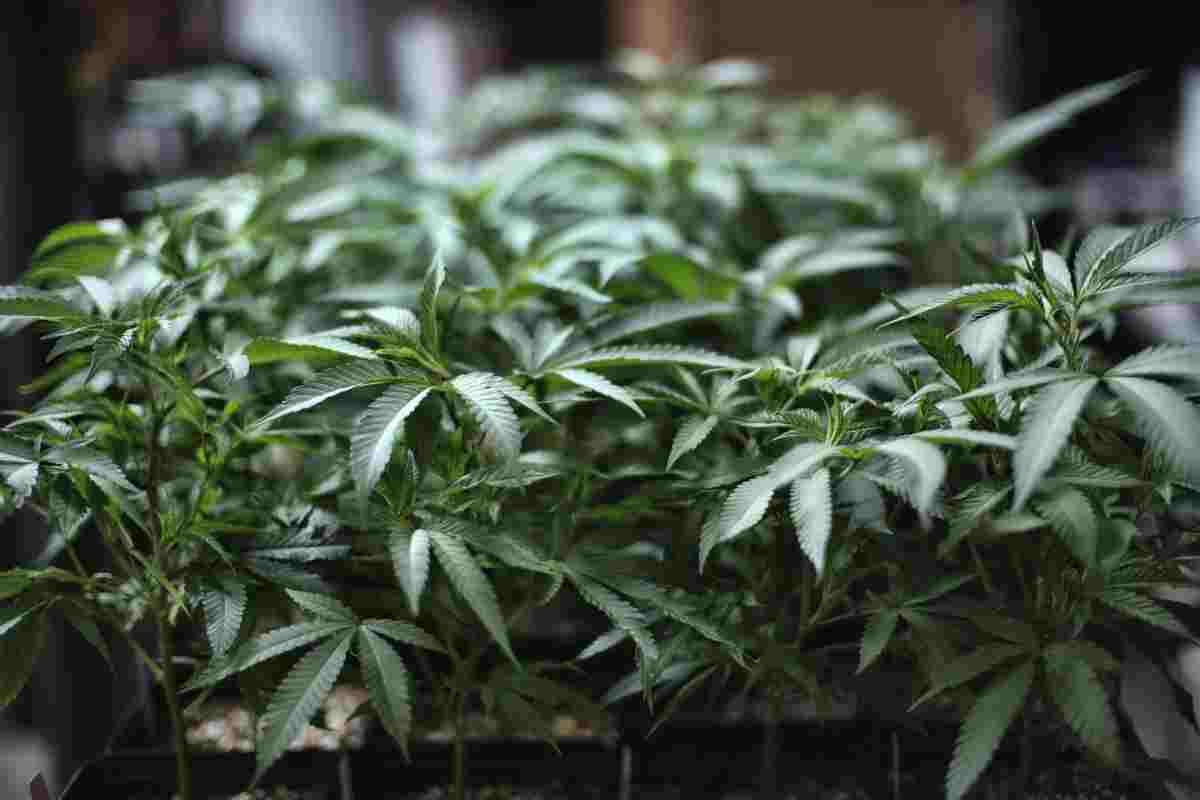Last year, B.C. farmers saw record sales. But it’s an increase that won’t feed British Columbians.
That’s because two-thirds of those sales were inedible.
“The bulk of that increase comes from cannabis,” said Lenore Newman, Canada Research Chair of Food Security and Environment at the University of the Fraser Valley. Since it was legalized in 2018, it has become B.C.’s most valuable crop, ahead of other key products like peppers and blueberries.
That rise reflects deeper issues around farmers’ access to land that concern Newman and other food security researchers.
Agricultural land is scarce in the province. While 4.6 million hectares are arable, merely 0.8 per cent of the province is active farmland.
Cannabis production grew by $300 million in 2019, the crop’s first full year on the legal market, according to provincial farm sales data.
Food sales saw significantly lower growth. Dairy and chicken, the province’s first- and second-most valuable products last year, accounted for an increase of $62 million combined, while sales of peppers and other greenhouse vegetables saw minimal growth.
“We should be making sure things like cannabis production, greenhouse production, are on lower-quality soils in the (Agricultural Land Reserve),” she said because converting soil-rich fields into greenhouses doesn’t improve food security.
Most of B.C.’s arable soil is protected under provincial legislation dating back to 1976. At the time, urban growth and other industries were rapidly occupying farmland. Alarmed, the B.C. government created the Agricultural Land Reserve to protect farms, ranches, and other agricultural land from development. Land in the reserve may be farmed, forested, or left vacant.
“We need to produce more locally in the future, especially with COVID,” said Newman.
That includes developing more greenhouses and policy solutions that allow for more efficient use of the province’s agricultural land base, she said.
Agricultural Land Reserve land is expensive. Without policies in place to support farmers to grow food — the average annual income for Canadian farmers sits around $30,000 — farmland will be increasingly used for more lucrative crops like cannabis.
While agricultural land is important for food security, cannabis and other inedible crops have brought new economic opportunities to B.C. farmers and farming communities, said the provincial Ministry of Agriculture in an email.
But Ian Paton, the agriculture critic for the B.C. Liberals and a farmer, thinks the province should offer more support to help farmers diversify.
For the most part, farmers can only sell raw products (an exception is made for farmers markets), limiting their ability to increase farm income through value-added products. That means a raspberry grower, for instance, couldn’t sell home-processed jam — a reliable way to increase the farm’s revenue.
Changing policy to allow farmers to sell homemade value-added products off farm is essential, said Paton. Other policy changes and programs are also needed to support farmers in all aspects of production, he said.
“They need low-interest loans. They need grants. They need insurance programs… We should be providing the kinds of basic economic tools they need to succeed.”
Still, that’s not enough for Kent Mullinix, director of Kwantlen Polytechnique University’s Institute for Sustainable Food Systems. Increasing local production will take more than grants or finding more efficient uses for the province’s agricultural land, he said.
In fact, he sees the replacement of food production by cannabis as the symptom of agricultural and land use policies that will eventually reduce British Columbians’ access to local food.
“It’s very easy for competing economic interests to grab up farmland and use it for other purposes because you can make more money at it.”
Agricultural Land Reserve sites cannot be developed and turned into houses or shopping malls. Still, this level of protection alone will not guarantee increased food production in B.C., said Mullinix. Owners of arable land in B.C. are constrained in how they can use their property, but there are no limitations on who can purchase these acres.
Investors — people and companies able to pay millions of dollars — can purchase Agricultural Land Reserve land, increasing its value beyond what most farmers can afford, and then use it to maximize profits.
Cannabis production is an example. It does nothing to increase food production. But it has been defined as a crop by the federal government, meaning it can be grown on agricultural land.
“Food-producing agriculture increasingly won’t be able to (compete). They already struggle without the cannabis.”
The numbers released last week also don’t show a full picture, Mullinix explained.
Farm sales receipts only show the amount of money flowing into a farm. They do not take into account the costs of production — mortgages, fuel, insurance, veterinary bills — that farmers must cover before they make a profit. Farms can have record sales without making profit.
This issue isn’t as acute on dairy and chicken farms because both industries are regulated through a supply-management system that ensures farmers’ profits and expenses are more balanced.
Which makes cannabis — not food — the most profitable use of B.C.’s arable land last year.
It’s a situation that Newman said needs to change if the province wants to increase its ability to feed itself.
“We don’t need to produce increased dollar value. We need to increase calorie production and food production. And that’s not what we’re doing.”
——-
By Marc Fawcett-Atkinson, Local Journalism Initiative Reporter
NATIONAL OBSERVER

